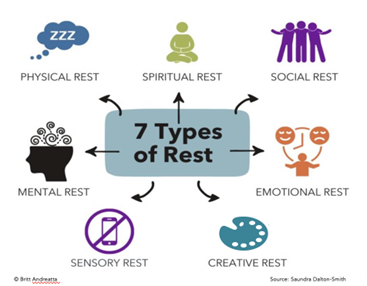ATD Blog
Science-Based Strategies for Thriving Through Change
Wed Jun 15 2022

Bookmark
You’ve heard the adage: The only constant in life is change. And while we know this is true, it doesn’t seem to make going through change any easier. This is because we’re wired to resist change. While we are an adaptive species, our first response to change is suspicion and resistance, a biological response that has helped us survive for hundreds of years.
Studies in neuroscience show us that the amygdala constantly scans the environment looking for any signs of change, because change is the precursor to impending threat or danger. We’re programmed to assume the worst until shown otherwise. How and when leaders communicate change can exacerbate this response or help move us toward acceptance and resilience.
We’re also programmed to be influenced by people around us. We’re very much a tribal species, biologically designed for living on the land in small communities. The survival instinct is so strong that we are influenced by other people’s fear. In organizations, a few people spreading “doom and gloom” perspectives can amp up the entire group’s fear and distress. This is why we must be careful with consuming media—while it’s wonderful that it helps us connect with people around the world, we can find ourselves living on high alert all the time, something that pushes us to burn out.
Burnout has been on the rise—pre-pandemic, the World Health Organization declared burnout an occupational disease, with about 53 percent of workers experiencing it. But the last two years have pushed that number above 90 percent, and it’s the top reason people cite for why they quit during the Great Resignation.
Burnout is a medically diagnosable condition; a state of emotional, physical, and mental exhaustion brought on by long-term stress. It’s characterized by three components:
Emotional exhaustion: Chronic fatigue that comes from caring too much for too long. It creates insomnia, impaired concentration, anxiety and depression, anger, and physical symptoms like heart palpitations, shortness of breath, GI pain, dizziness, headaches, and fainting.
Decreased sense of accomplishment: An unconquerable sense of futility, feeling that nothing you do makes any difference. It creates increased feelings of apathy, hopelessness, and irritability. It contributes to lack of productivity and poor performance.
Detachment: The depletion of empathy, caring, and compassion for others or ourselves. It includes isolation as well as losing a sense of enjoyment from things that used to feel good, including jobs and relationships.
Often, when people read this list, they start to cry—this was certainly true for me. We have lived through a global trauma, and we’ve been so busy getting through it that we didn’t see how it was impacting us. But globally and collectively, we are in a state of burnout never seen before.
Burnout occurs when we overwork and under-rest. SHRM found that 70 percent of workers who transitioned to remote work during the pandemic say they now work on weekends, and 45 percent say they regularly work more hours than they did before the lockdowns.
The only cure for burnout is to rest and recharge—both were difficult to do during the past two years, but this backlog in our well-being needs to be addressed. It’s important to take your vacations and encourage others to do the same. We need lots of rest in all its seven forms.

We need to start doing the activities that brought us joy before like eating out, doing fun things with friends, and taking a class. The problem is that burnout makes them seem less appealing now, so we might say “no” when what we really need to do is lean in to them, knowing that with time, joy will return.
Play is an important part of self-care, one that working adults often deny themselves. But research shows that play is critical for our psychological and physical well-being. Play is also how we heal from burnout because it sends a strong signal to our biology that we are safer now, helping the amygdala stand down from its hyper vigilance. It also directly impacts our mental health—consider this quote from Brian Sutton-Smith: “The opposite of play is not work. It’s depression.”
While the pandemic has certainly created burnout, change fatigue was a problem that many organizations struggled with. In fact, too much organizational change is the second reason people are currently giving for quitting their jobs.
Change fatigue is brought on when change is coming at us so quickly that we don’t have time to settle into the new normal before being hit with more change. There are six symptoms of change fatigue: disengagement, exhaustion, absenteeism, confusion, conflict, and cynicism. Leaders can certainly help reduce change fatigue by being more thoughtful about how and when change is rolled out and by providing more resources to help people move through change effectively.
But when we are on the receiving end of change, we can still empower ourselves to thrive through change. Using the above strategies are critical, and we can boost their power by engaging in a mindfulness practice like meditation or yoga. Neuroscience studies show that mindfulness creates a permanent change in the brain, reducing the amygdala’s hyperactivity and helping us to recover more quickly from a variety of stressors including change.
The good news is that while humans resist change, we are also an adaptive species. When we engage in rest, play, and mindfulness, we boost our resilience and can help others do the same.
More from ATD

